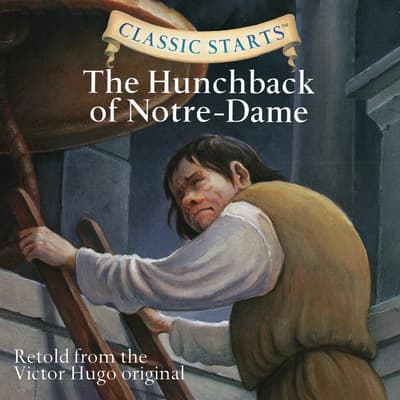

When it came out in 1831 and was a major literary success, The Hunchback of Notre Dame the news and attention it created at the time brought attention to the Cathedral which had been in a terrible state of disrepair. It reminds us almost two centuries later that the has already been saved and rebuilt before. Ages 5-8.The famous book by Victor Hugo is more relevant than ever when it comes to the recent events at the cathedral. This polished, thoughtful collaboration may serve as an authentic preview to Hugo's classic, but may be best appreciated with an adult standing by. His mastery of detail, especially in period dress and architecture, makes turbulent medieval Paris appear real-sometimes frighteningly so. Dramatically framing the text are Slavin's (Extra! Extra! The Who, What, Where, When and Why of Newspapers) subtly hued, skillfully composed paintings. The court had made him that way." Still, the deeper implications of the story will likely be lost on children. The irony in Hugo's novel is preserved here, as when Wynne-Jones draws a delicious parallel between church and state: Quasimodo is deaf because "the bells of the church had made him that way" the judge who sentences the deformed man to a flogging "is as deaf as Quasimodo. Although the narrative is fluent and conversational, children may need guidance through some of the more challenging vocabulary and occasional wordy passages. Wynne-Jones (Some of the Kinder Planets) makes no attempt to soften the harsh story of the hideously deformed, big-hearted Quasimodo, who escapes ridicule only in the sanctuary of the cathedral. It saves her, for she captures the heart of the hunchback.Ĭhildren who have had a taste of Hugo's 18th-century epic through the animated film may find this version, with its absence of song, rather sobering. Esméralda seeing his thirst, offers him water. Quasimodo is caught and whipped and ordered to be tied down in the heat. Frollo is torn between his lust and the rules of the church. Quasimodo, the deformed bell ringer, is introduced by his crowning as Pope of Fools.Esméralda, a beautiful 16-year-old gypsy with a kind and generous heart, captures the hearts of many men but especially Quasimodo’s adopted father, Claude Frollo. The book was written as a statement to preserve the Notre Dame cathedral and not to 'modernize' it, as Hugo was thoroughly against this.The story begins during the Renaissance in 1482, the day of the Festival of Fools in Paris. The book tells the story of a poor barefoot Gypsy girl (La Esmeralda) and a misshapen bell-ringer (Quasimodo) who was raised by the Archdeacon (Claude Frollo).

It is set in 1482 in Paris, in and around the cathedral of Notre Dame de Paris.

The Hunchback of Notre Dame (French: Notre-Dame de Paris) is an 1831 French novel written by Victor Hugo.


 0 kommentar(er)
0 kommentar(er)
